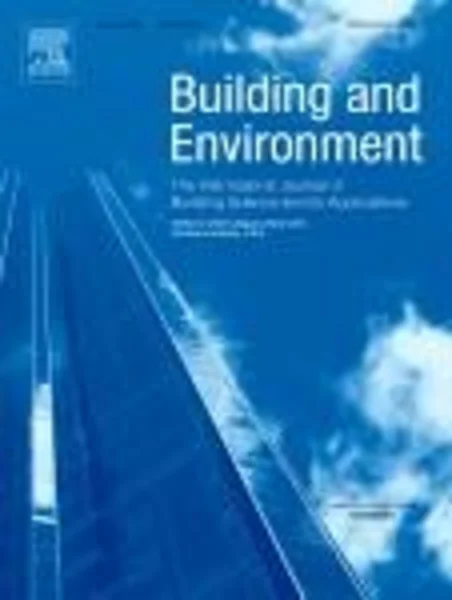-
modeling impacts of roof reflectivity, integrated photovoltaic panels and green roof systems on sensible heat flux into the urban environment
جزئیات بیشتر مقاله- تاریخ ارائه: 1390/01/01
- تاریخ انتشار در تی پی بین: 1390/01/01
- تعداد بازدید: 514
- تعداد پرسش و پاسخ ها: 0
- شماره تماس دبیرخانه رویداد: -
this study presents results of a modeling effort to explore the role that sustainable roofing technologies play in impacting the rooftop energy balance, and the resultant net sensible heat flux into the urban atmosphere with a focus on the summertime urban heat island. the model has been validated using data from a field experiment conducted in portland oregon. roofing technologies explored include control dark membrane roof, a highly reflective (cool) roof, a vegetated green roof, and photovoltaic (pv) panels elevated above various base roofs. energy balance models were developed, validated with experimental measurements, and then used to estimate sensible fluxes in cities located in six climate zones across the us. on average the black roof and black roof with pv have the highest peak daily sensible flux to the environment, ranging from 331 to 405 w/m2. the addition of pv panels to a black roof had a negligible effect on the peak flux, but decreased the total flux by an average of 11%. replacing a black roof with a white or green roof resulted in a substantial decrease in the total sensible flux. results indicate that if a black membrane roof is replaced by a pv-covered white or a pv-covered green roof the corresponding reduction in total sensible flux is on the order of 50%. the methodology developed for this analysis provides a foundation for evaluating the relative impacts of roof design choices on the urban climate and should prove useful in guiding urban heat island mitigation efforts.
مقالات جدیدترین رویدادها
-
استفاده از تحلیل اهمیت-عملکرد در ارائه الگوی مدیریت خلاقیت سازمانی و ارائه راهکار جهت بهبود
-
بررسی تاثیر ارزش وجوه نقد مازاد بر ساختار سرمایه شرکت های پذیرفته شده در بورس اوراق بهادار تهران
-
بررسی تأثیر سطح افشای ریسک بر قرارداد بدهی شرکت های پذیرفته شده در بورس اوراق بهادار تهران
-
بررسی تأثیر رتبه بندی اعتباری مبتنی بر مدل امتیاز بازار نوظهور بر نقد شوندگی سهام با تأکید بر خصوصی سازی شرکت ها
-
تأثیر آمیخته بازاریابی پوشاک ایرانی بر تصویر ذهنی مشتری پوشاک ایرانی (هاکوپیان)
-
نگرشی به جلوه های سنت خانه های تهران عهد قاجار با تاکید بر فضاهای ورودی
-
بررسی عوامل موثر بر زنجیره تأمین تاب آور (مطالعه موردی: شرکت چینی بهداشتی مروارید یزد)
-
تحلیل اثرات فرهنگ سازمانی بر فرسودگی شغلی کارکنان و ارائه راهکارهای مناسب (بر اساس مدل دنیسن)
-
nonlinear systems with singular vector ϕ-laplacian under the hartman-type condition
-
hybrid neural networks as tools for predicting the phase behavior of colloidal systems
مقالات جدیدترین ژورنال ها
-
مدیریت و بررسی افسردگی دانش آموزان دختر مقطع متوسطه دوم در دروان کرونا در شهرستان دزفول
-
مدیریت و بررسی خرد سیاسی در اندیشه ی فردوسی در ادب ایران
-
واکاوی و مدیریت توصیفی قلمدان(جاکلیدی)ضریح در موزه آستان قدس رضوی
-
بررسی تاثیر خلاقیت، دانش و انگیزه کارکنان بر پیشنهادات نوآورانه کارکنان ( مورد مطالعه: هتل های 3 و 4 ستاره استان کرمان)
-
بررسی تاثیر کیفیت سیستم های اطلاعاتی بر تصمیم گیری موفق در شرکتهای تولیدی استان اصفهان (مورد مطالعه: مدیران شرکتهای تولیدی استان اصفهان)
-
تاثیر تغییرات اقلیمی بر اکوتوریسم شهر خرم آباد
-
ارزیابی تأثیر آموزش تمدد اعصاب (ریلکسیشن) بر بیماری های روانی و کاهش استرس در زنان
-
خوانش هویت شهری با تأکید بر ارزش های فرهنگی نهفته در خاطرات-جمعی شهروندان (مطالعۀ موردی: شهر بجنورد)
-
بررسی اثر رفتار سرمایه گذاران بر رابطه بین ثبات مدیریتی و ارتباطات سیاسی در شرکت های پذیرفته شده در بورس اوراق بهادار تهران
-
بررسی رابطه سبک رهبری توزیعی مدیران با عملکرد شغلی کارکنان بانک ملی استان آذربایجان غربی




سوال خود را در مورد این مقاله مطرح نمایید :